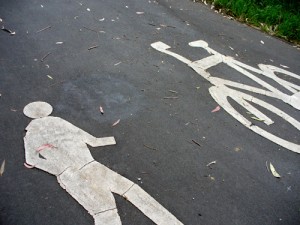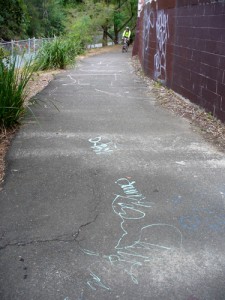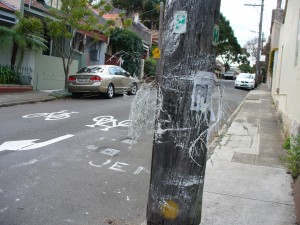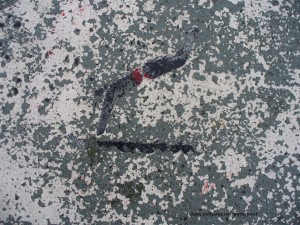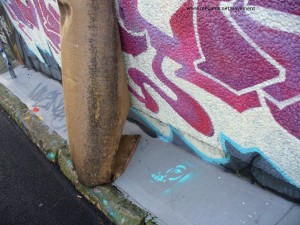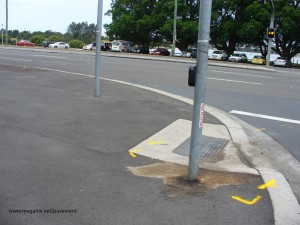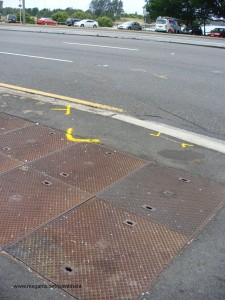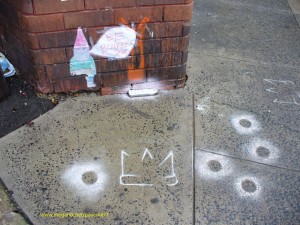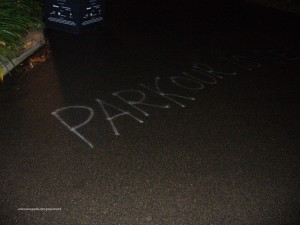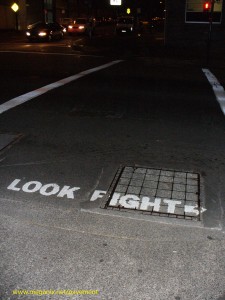‘Pavements should not be dismissed as simply utilitarian. A close inspection of Sydney footpaths will reveal that they are seldom purely practical, and never plain. There is always some decorative embellishment embedded in the paving or applied to its surface.’ So begins a recent entry in the on-line Dictionary of Sydney. Naturally I find this article interesting, and that’s mainly because I wrote it.
Footpaths are a matter of civic pride. The state of the sidewalks is an indicator of a city’s wealth and progress. For appearances’ sake local governments not only upgrade footpaths in busy areas, often replacing asphalt with synthetic bluestone pavers, but they also commission pavement artworks. This mosaic at Erskineville Station has actual tools from the former Eveleigh Railway Workshops embedded in it.
It is also civic pride and the desire to make an area seem safe and well-managed, that prompts government authorities to outlaw graffiti. In Sydney it is unusual for pavement artists to be allowed to draw directly on the paving. Usually they are required to tape down some sort of plastic backing. This artist outside the Queen Victoria Building is an exception.


